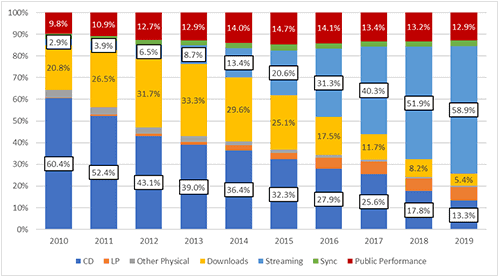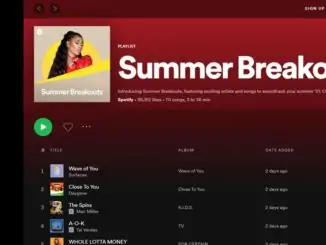
UK record label income reaches £1.1 Bn in 2019, a 7.3% increase on 2018 and the fourth consecutive year of growth according to recent figures released by the BPI, the UK’s recorded music industry association. This is the highest level of annual trade income in well over a decade and fuelled by the continuing increase in streaming income, which leapt by 21.8% to reach £628.9 million.
Record label trade income is made up of combined revenues generated through streaming, sales of music across physical and download formats, public performance rights, and ‘sync’ – music licensed for use in film & TV, games and advertising.
The rise in revenues tracks the 7.5% increase in consumption reported by the BPI earlier this year. Within streaming, ad-supported audio streaming revenues were up strongly by 29.7%, and video streaming revenues also grew by 18.8%, but fell further behind the growth of other streaming channels. Vinyl delivered revenues of £66.3 million up 16.1% on the year.
The BPI noted that video streaming services failed to close the ‘Value Gap’ in 2019, generating only just over half the income produced by vinyl records, while illegal websites, in particular P2P and ‘stream ripping’ sites, continued to leach value from the recorded music sector online, estimated at £120 million per year.
Subscriptions drive streaming growth
Subscription represents the vast bulk of streaming revenues generated from services such as Spotify, Apple Music and Amazon Music Unlimited and is responsible for 90.4% (£568.8 million) of the 2019 total of £628.9 million. Income of £24.8 million from ad-supported tiers of audio streaming services now accounts for just 3.9% of the streaming total which is slightly below the £35.3 million (5.6% share) which video streaming ads contribute.
Streaming-generated revenues now make up the majority (58.8%) of record label trade income (with sync and public performance revenues included). Its significance to the industry is underlined by recent IFPI research, which reports that nearly 4 in every 10 (39%) adults aged 16 or above now use a paid service. This is in line with the most recent estimates from MIDiA Research (for Q2 2019) that put the number of premium streaming subscribers in the UK at nearly 20 million (19.6m).

Physical formats remain resilient
Whilst mainstream music consumption is now largely digital, physical formats continue to enjoy a healthy, complementary relationship with streaming as a valued part of the music eco-system.
At £215.8 million, physical made up a fifth (20.2%) of trade income in 2019. CD remained the dominant format with revenues of £141.7m representing 13.3% of the overall total. However, vinyl continues to catch up, rising 16.1% to £66.3 million and accounting for 6.2% of overall industry income.
‘Sync’ earnings also on the up
Revenues of £28.3 million generated from the licensing of ‘sync’ music for use in film & TV soundtracks, games and advertising in 2019 represented an 11.1% rise on the year. This reflected the impact of music in films such as Last Christmas, which featured the songs of George Michael and Wham!, Bohemian Rhapsody and Rocketman, as well as the widespread use of music in games and advertising such as the seasonal campaigns for John Lewis and Tesco.




